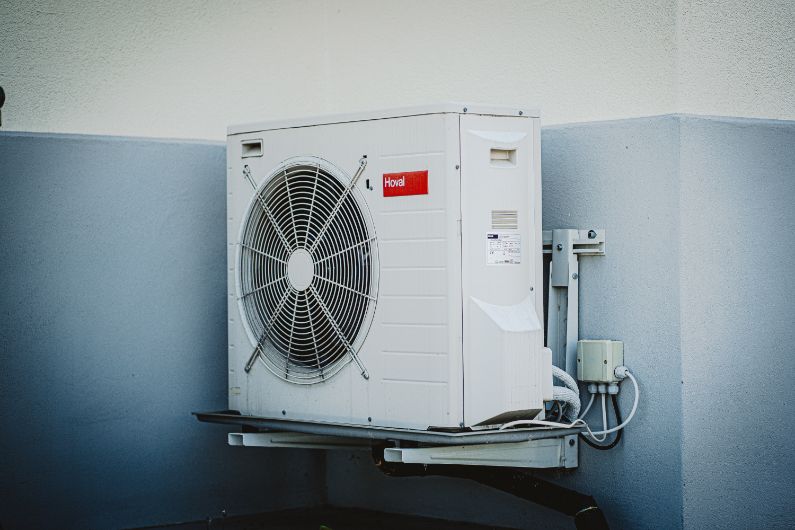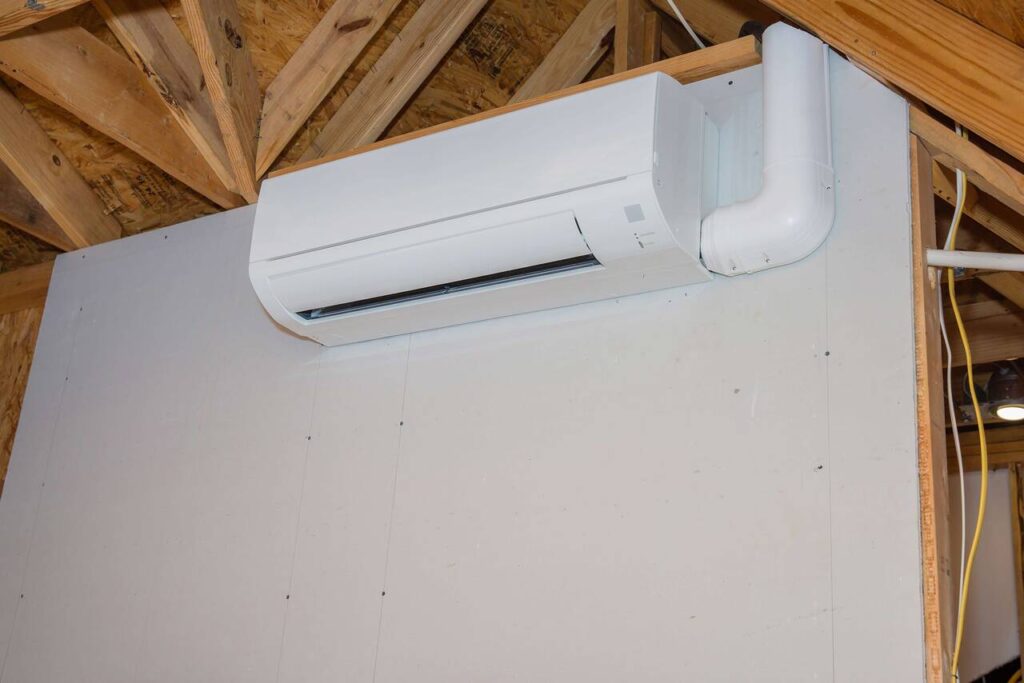Mini-splits will be discussed in detail in this article, along with their benefits and drawbacks, and frequently asked questions.
When searching online for an efficient heating and air-conditioning system for your home, you’ve likely seen “mini-split” in the results.
Mini-split heating and cooling systems let you regulate the temperature in specific rooms or areas. An indoor air-handling unit (evaporator) and an outdoor compressor/condenser are the two main parts of a mini-split system.
But how do they work and why are homeowners today choosing them so frequently? Here are the answers.
What is a Mini-split?
An appliance that can both cool and heats a home is a mini-split, also known as a ductless air conditioner. But unlike a traditional air conditioning or heating system, mini-splits offer “zone control.”
Each indoor unit of a mini-split can be set to a different temperature, unlike a traditional heating and cooling system, which can only be turned on or off. Additionally, fewer, shorter lines rather than extensive ductwork must be run to each indoor unit.
Mini-splits typically operate more efficiently than conventional air conditioners, giving you more control over the temperature in your entire house. Additionally, they are 2-4 times more efficient than a furnace, baseboard heater, or boiler when in heating mode.
How Does a Mini-split Work?
As the name implies, these air-conditioning or heat pump systems are split into two functional components; an outdoor condenser/compressor unit and an indoor air-handling unit. These components are smaller (or “mini“) compared to conventional systems.
The system controller, which can either be a wall-mounted thermostat or a handheld remote control, is the third component. You can regulate your temperature from any smart device, anywhere, with the help of an app.
Depending on the application, control and power wiring are typically run through a three-inch opening in the wall or ceiling on each ducted or ductless indoor unit to connect to the outdoor unit.

The indoor and outdoor units communicate continuously, relaying current conditions and adjusting performance to maintain your desired temperature.
Inverter-driven compressor technology gives Mitsubishi Electric mini-splits an additional boost in efficiency and dependability. The motor can ramp up or down smoothly with the help of this variable-speed technology, maintaining the desired set temperature.
The energy consumption of the quiet compressor, which hums along, is always accurate. On the other hand, many traditional heating and cooling systems operate on a wasteful, frequently noisy on/off cycle.
Benefits of Mini-splits
A mini-split system gives you greater control over how your home is heated, cooled, and dehumidified by eliminating ducts and allowing each indoor unit to perform some of the cooling work. Let’s go over each benefit one by one.
Individual Control of Each Indoor Unit
The ability to separate your home into distinct comfort zones is another benefit of ductless mini-splits over a conventional central system, which relies on one sizable air handler to push air through extensive ductwork into every room of the house.
Indoor ductless mini-split units are put in right where they will be used. Without replacing your current system, you can use single-zone mini-splits to address hot or cold spots, or room additions, in specific areas of your house.
Alternatively, you could swap out your outdated system for a multi-split, which would allow you to connect up to eight indoor units to a single outdoor unit. Depending on the number of people using a room and their comfort preferences, the temperature and airflow can be changed.
For the greatest amount of energy savings, you can also turn off appliances in empty rooms.
Efficiency
According to Energy Star, ducts cause 20–30% of the air to escape from a typical home. Mini-split systems generate cooling or heating at each unit, preventing these losses.
The ability to keep rooms or zones at different temperatures or turn them off entirely is another benefit that comes with mini-splits. A mini-split system could offer significant savings while you sleep if your bedroom is across the house from the location of the main thermostat.
Two Major Appliances for the Price of One
Mini-splits can heat your home in addition to cooling it, so when you install them you can avoid paying for a furnace or baseboards.
Similar no-duct thermal energy transfer is used by mini-splits in heating mode to warm your home. They can do it up to four times more efficiently than any other heating system, as with all heat pumps.
You can use a heat pump with a ducted system, but a mini-split system (which also uses heat pump technology) delivers this heat in the most efficient way possible
Higher-quality Air
In a common indoor location, one filter is installed in ducted HVAC systems. Homeowners may be discouraged from taking on the task because cleaning the ducts usually requires professional assistance (ask us how we know).
In contrast, a mini-split system has individual air filters for each indoor unit that can be changed by the homeowner using nothing more than a stepladder.
Dehumidification
Dehumidifiers operate in tandem with air conditioners whenever they are turned on. This also applies to mini-splits. However, there is one significant advantage mini-splits have over conventional air conditioning systems in this regard.
Imagine that it is an October day that is humid but not overly hot. You might not want to turn on the air conditioner. You absolutely do not want to sit in a humid home, though—for your health as well as your comfort. You have two options when using a conventional air conditioning system: turn on the AC and bundle up, or sit in miserable humidity.
If you have a mini-split, you can turn it on “reheat dehumidification mode,” which sounds more complex than it actually is. This mode allows you to maintain a constant temperature while dehumidifying the air.

Downsides of Mini-splits
Also, mini-splits have disadvantages, we explain them below:
Potentially Higher Upfront Costs
It is expensive to install brand-new ductwork for a central air system in a house, especially an older one.
However, installing a new mini-split system doesn’t come cheaply either. Even one zone can cost between $2,000 and $6,000. According to homeowners and contractors we spoke to, multi-zone systems that cover an entire home typically cost between $8,000 and $12,000.
Electrical Requirements
The electrical work needed for mini-splits can range from simple (such as running a 220V line to each indoor unit) to complex (such as upgrading your electrical panel). Some homeowners are even required to completely upgrade their electrical service from 100 amps to 200 amps.
Aesthetics of Wall Units
Each indoor unit in the standard mini-split configuration is hung on a wall. White or black wall units are available. They’d be viewed as neutral by many. However, hanging anything on their wall may not be something they enjoy.
The use of floor-mounted, flush-ceiling, and ceiling-suspended units are some alternatives to wall units, as was previously mentioned. However, choosing these options usually results in higher labor and unit costs.
Is a Ductless Mini-Split Right for My House?
For the majority of households, mini-splits are an excellent option. Think about these reasons why installing a ductless mini-split could be right for your home:
- Even a house without any existing ductwork can be heated and cooled.
- In order to reduce your energy costs, you can turn off the heating and cooling in unused spaces.
- Mini-splits provide additional heating and cooling for difficult-to-keep-comfortable spaces.
- Without the expense of installing ductwork or the inconvenience of using window AC units, use a ductless system to heat and cool a home addition or enclosed porch.
- When overhead ductwork is not an option, mini-split systems make sense. The following are a few examples: historic homes, tiny houses, heated workshops or sheds, or garage conversions.





